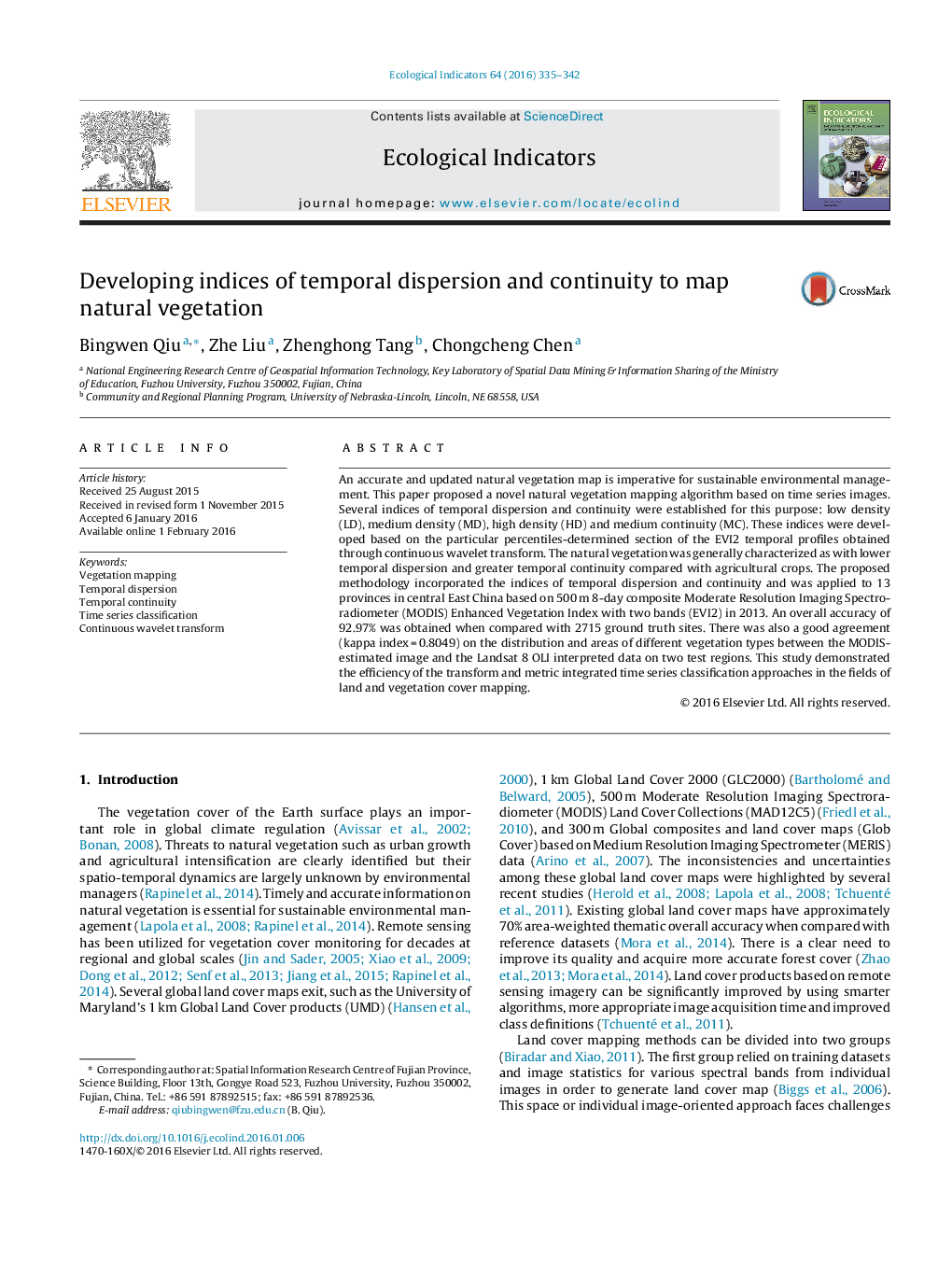| کد مقاله | کد نشریه | سال انتشار | مقاله انگلیسی | نسخه تمام متن |
|---|---|---|---|---|
| 4372964 | 1617138 | 2016 | 8 صفحه PDF | دانلود رایگان |
• Mapped natural vegetation through combining indices of temporal dispersion (VMTD) and continuity.
• Developed indices based on particular percentiles-determined section of EVI2 temporal profile by CWT.
• Temporal dispersion was proposed by combining the range and standard derivation.
• Temporal continuity was designed as the maximum length above a specific percentile.
• Confirmed the merits of transform and metric integrated time series classification approaches.
An accurate and updated natural vegetation map is imperative for sustainable environmental management. This paper proposed a novel natural vegetation mapping algorithm based on time series images. Several indices of temporal dispersion and continuity were established for this purpose: low density (LD), medium density (MD), high density (HD) and medium continuity (MC). These indices were developed based on the particular percentiles-determined section of the EVI2 temporal profiles obtained through continuous wavelet transform. The natural vegetation was generally characterized as with lower temporal dispersion and greater temporal continuity compared with agricultural crops. The proposed methodology incorporated the indices of temporal dispersion and continuity and was applied to 13 provinces in central East China based on 500 m 8-day composite Moderate Resolution Imaging Spectroradiometer (MODIS) Enhanced Vegetation Index with two bands (EVI2) in 2013. An overall accuracy of 92.97% was obtained when compared with 2715 ground truth sites. There was also a good agreement (kappa index = 0.8049) on the distribution and areas of different vegetation types between the MODIS-estimated image and the Landsat 8 OLI interpreted data on two test regions. This study demonstrated the efficiency of the transform and metric integrated time series classification approaches in the fields of land and vegetation cover mapping.
Figure optionsDownload as PowerPoint slide
Journal: Ecological Indicators - Volume 64, May 2016, Pages 335–342
